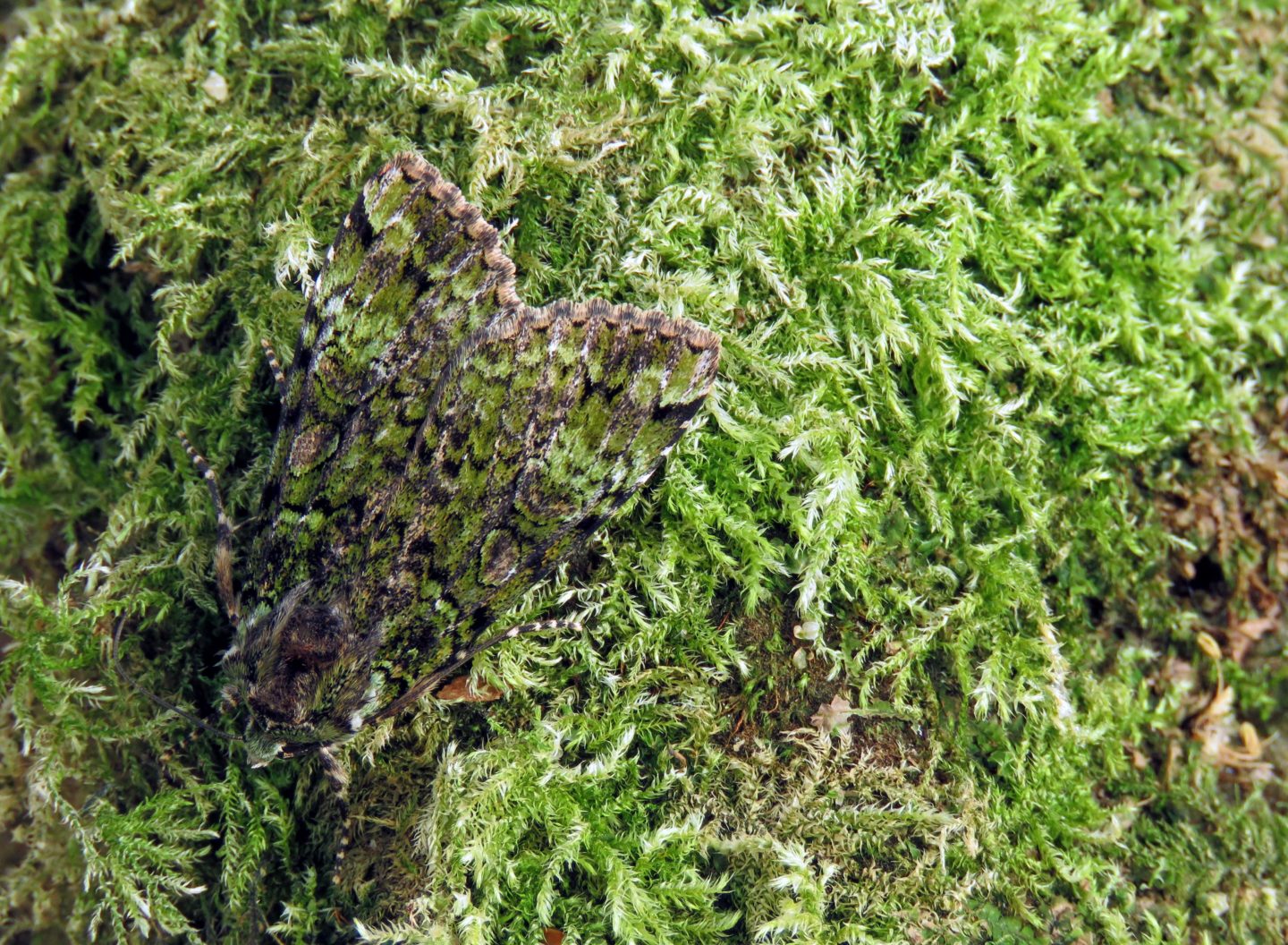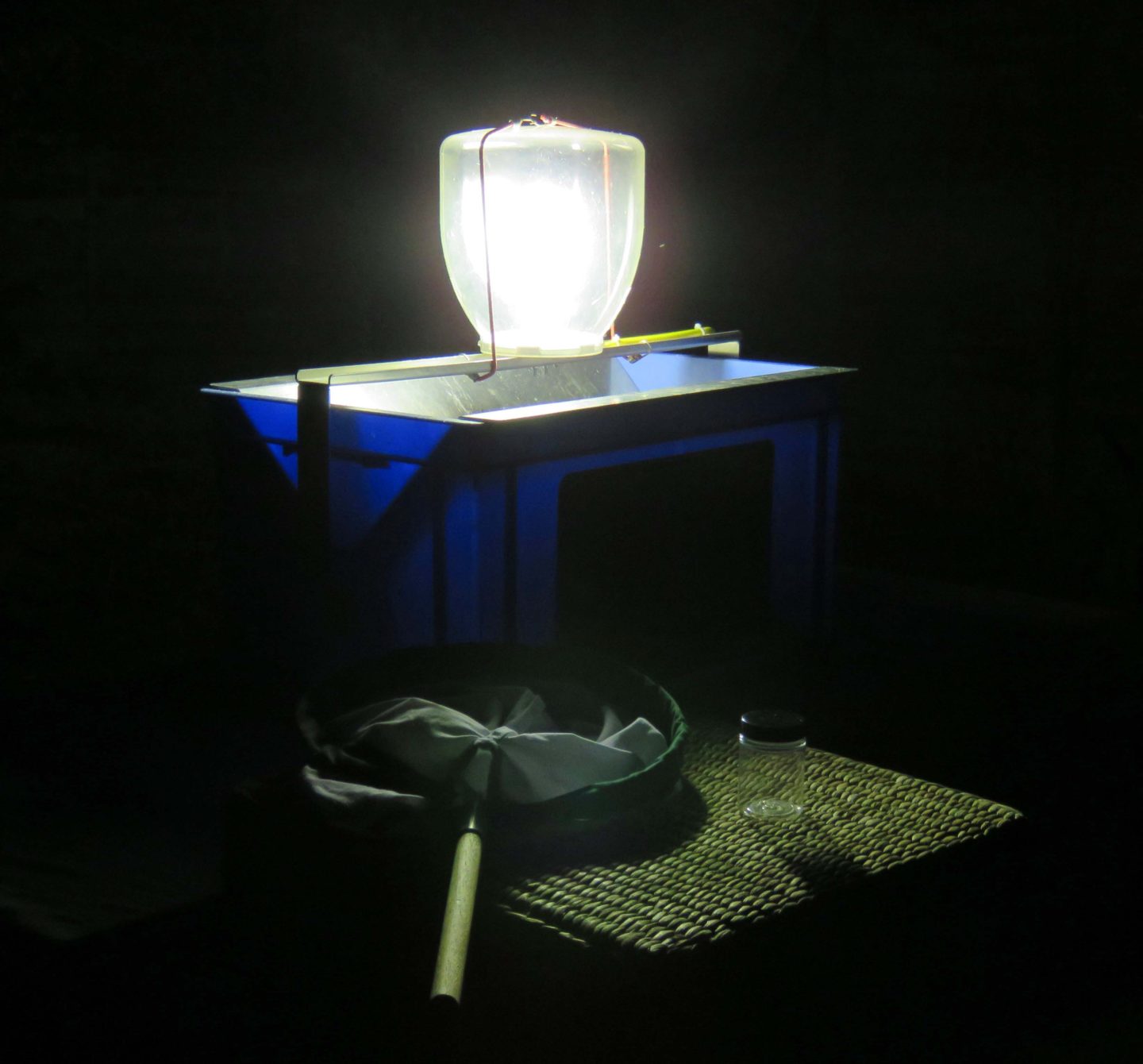 Welcome to ‘What’s in the box?’, a regular feature that looks at what has been recorded over the previous month.
Welcome to ‘What’s in the box?’, a regular feature that looks at what has been recorded over the previous month.
My moth trap is homemade (albeit not by me!) and contains egg boxes for moths to huddle into and a bright light to attract the moths. I set it up as and when the weather permits and the usual plan is to position it in the garden at Bubble HQ using the mains electric. I then run around like a mad woman with a net and pots catching everything flying to the light (except bats which can be a bit of a problem sometimes!). The neighbours do think I’m a little odd! When bedtime calls, the trap is then left running all night and everything that has fallen into the box is recovered early morning. And when the box is opened….I never know what I’m going to get.
I do take the trap further afield using a generator. I have permission to use the trap in certain local areas and always release the moths back to where they were found.
All records will be from Bubble HQ here in Dalby Forest unless otherwise stated.
Camouflage in Swift Alley
If you read last month’s ‘What’s in the Moth Box?’, you’ll have seen that a new mothing site (which I named Swift Alley due to the amount of Swift moths present) was quite successful so the first field trip of July found me right where I ended June….back at Swift Alley. Gold Swifts and Map-winged Swifts were present but not in the numbers previously seen. Had this been the first time, Swift Alley may well have become Clay Alley as Purple Clays were the most common with 15 caught in total.
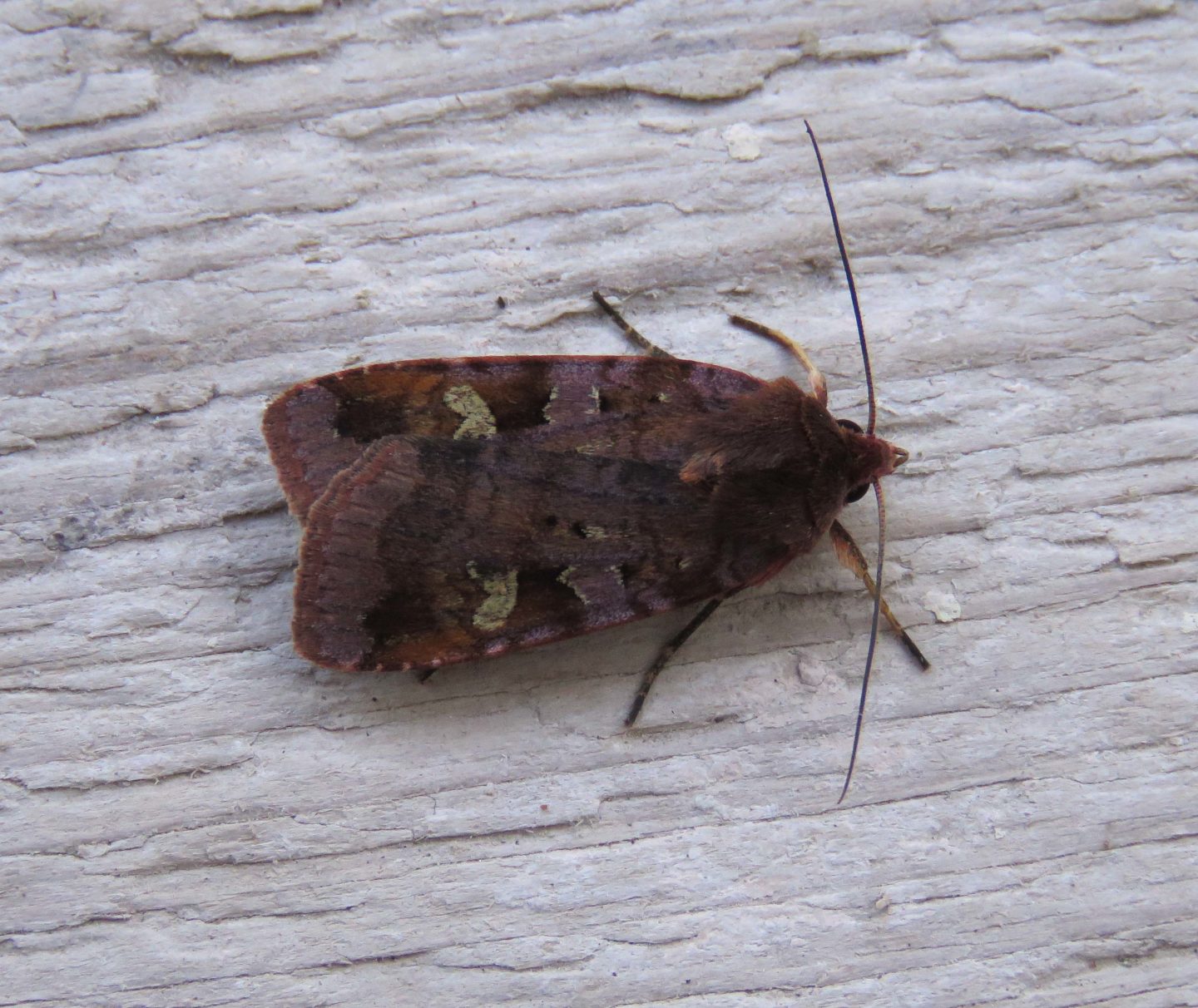
Purple Clay (Diarsia brunnea)
The Purple Clay’s larval foodplants include bilberry, bramble and birch. There’s plenty of these in the area so no surprise that they were so common there. Brimstones, Lesser Angle Shades, Tawny Barred Angle and Mottled Beauties all put in an appearance. Three Iron Prominents came to the light.
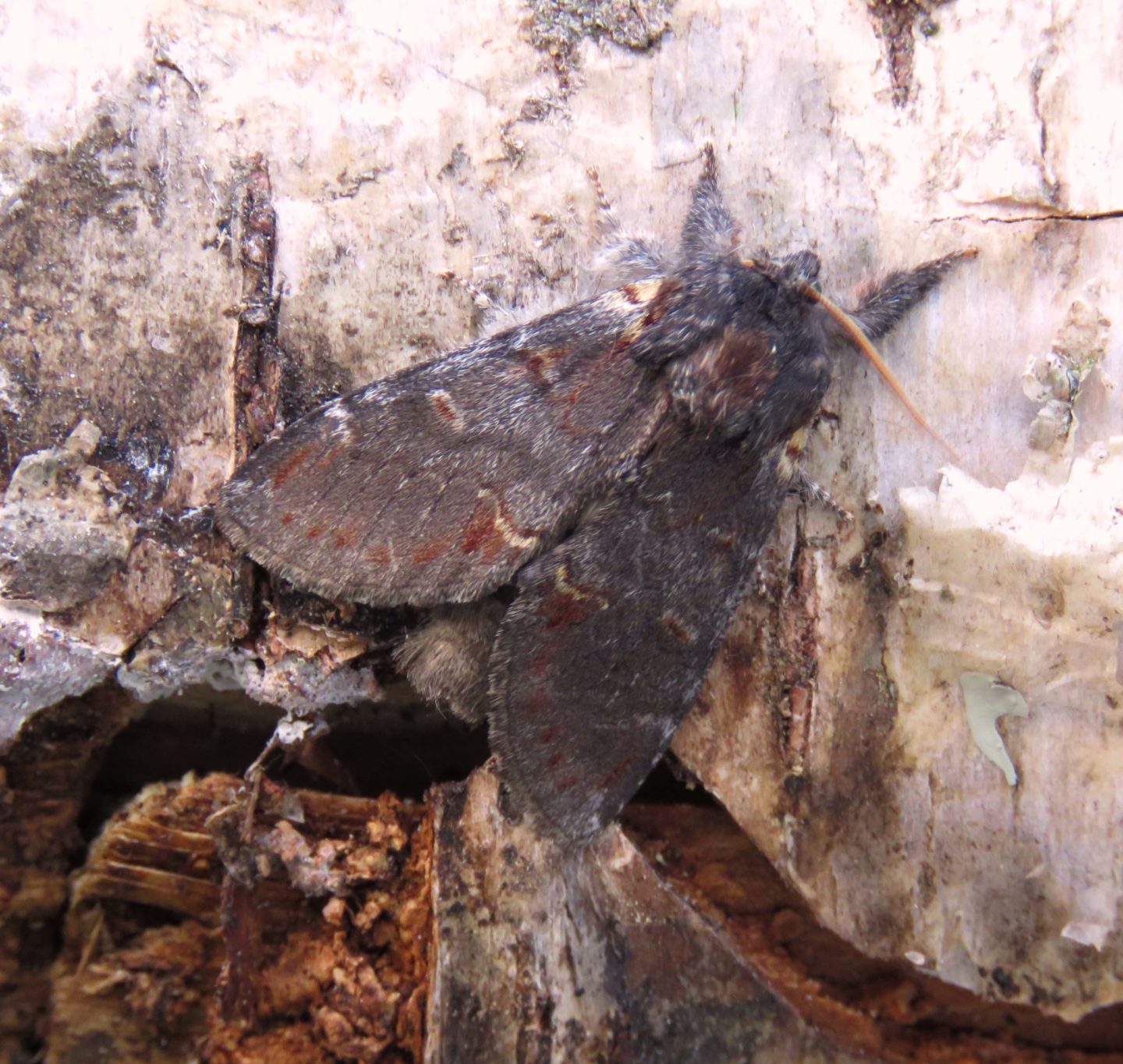
Iron Prominenet (Notodonta dromedarius)
The scientific name is Notodonta dromedarius. The latter part refers to the humps on the larvae. It took me ages to realise that the humps did not refer to the moth. I kept looking and thinking that the humps were a little tenuous.
In northern England, the ground colour of the forewings is darker with the markings fainter than in southern parts of the country. Here’s a little slo-mo video clip of the wings.
One Northern Spnach brightened up the box. The larval foodplant is the rose, Dog-rose, Burnet Rose and similar, which isn’t at Swift Alley but I did find it in the nearby quarry.

Northern Spinach (Eulithis populata)
I’m always on the lookout for species which are a dab-hand at camouflage and I wasn’t disappointed. Both Green Arches and Grey Arches came to the light. Both larvae feed on primrose, dock, honeysuckle, bramble and bilberry. Green Arches fades very quickly so I was lucky that this one must have been fresh out as it was a stunning deep green colour. The Grey Arches is exactly as the name suggests…grey…although it apparently used to be blacker in Victorian Britain when industry produced a more polluted air that blackened trees and buildings.

Above left: Grey Arches (Polia nebulosi). Above right: Green Arches (Anaplectoides prasina)
Altogether, Swift Alley produced 123 moths of 43 species in just a couple of hours.
Midges Galore
Still in search of new sites, I found an area of grass, bracken, Meadowsweet, deciduous trees and shrubs bordered by a stream, thick forest and open moorland. As the small patch had a picnic bench, it felt luxurious to sit waiting for moths to come down….that is until the midges struck! I had every part of me covered except for my eyes. When they started to land on my eyeballs, I called it a day. 1.5 hours I lasted! I didn’t even reach midnight. That said, 131 moths of 34 species wasn’t too shabby.

Before darkness and before the midges struck. I’m not having a picnic, M&S ‘bags for life’ are perfect for transporting moth pots!
The first to the light was the smallest of the night. Epinotia tedella. Epinotia means ‘on the back’ but according to every book I could find on the subject, it’s not clear what is on the back to call it that. Tedella is easier and means resinous pine from the foodplant. Dalby Forest is full of resinous pine so Epinotia tedella is definitely in the right place.
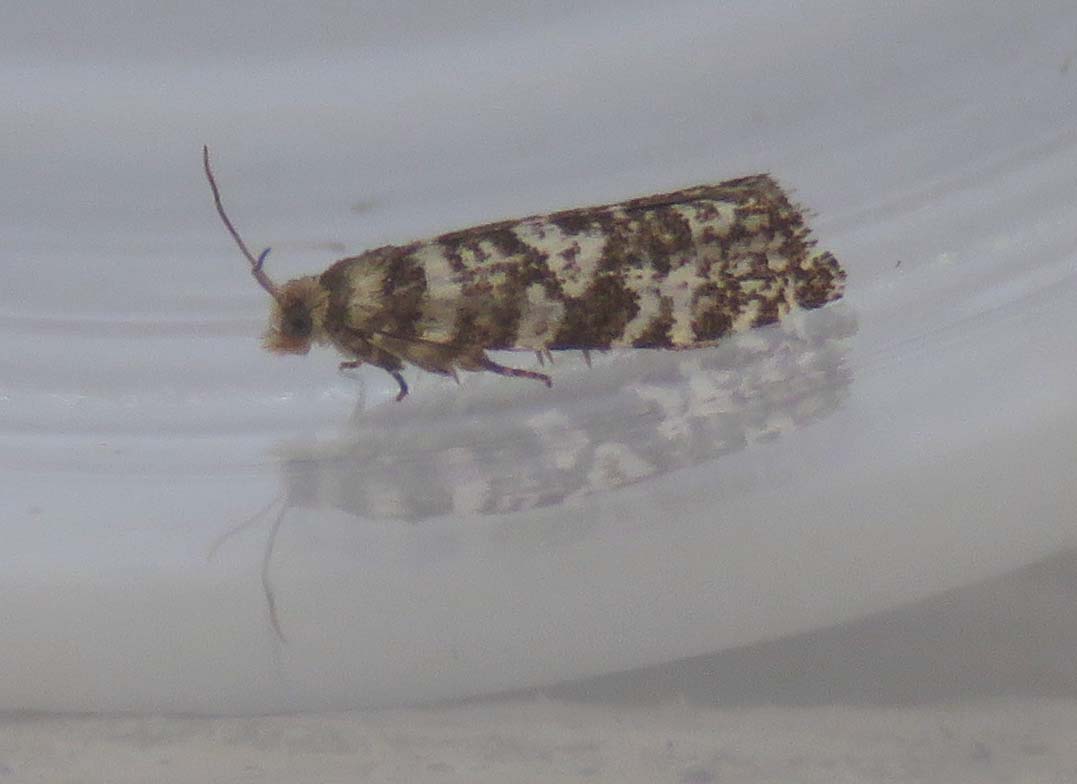
Epinotia tedella
A whopping 25 Mottled Beauties appeared and then the Waves started to compete with them.

Centre: Welsh Wave. Clockwise from top left: Common Wave, Riband Wave, Common White Wave, Single-dotted Wave, Small Fan-footed Wave
There were 14 Common White Waves but only 2 Common Waves. In flight and in the darkness lit by the box bulb or torchlight, I find them quite difficult to tell apart. In daylight, however, I find it much easier.

The first Clouded Magpie of the year came down. They’re not so common in the area so I’m always pleased to see them and they’re unmistakeable.
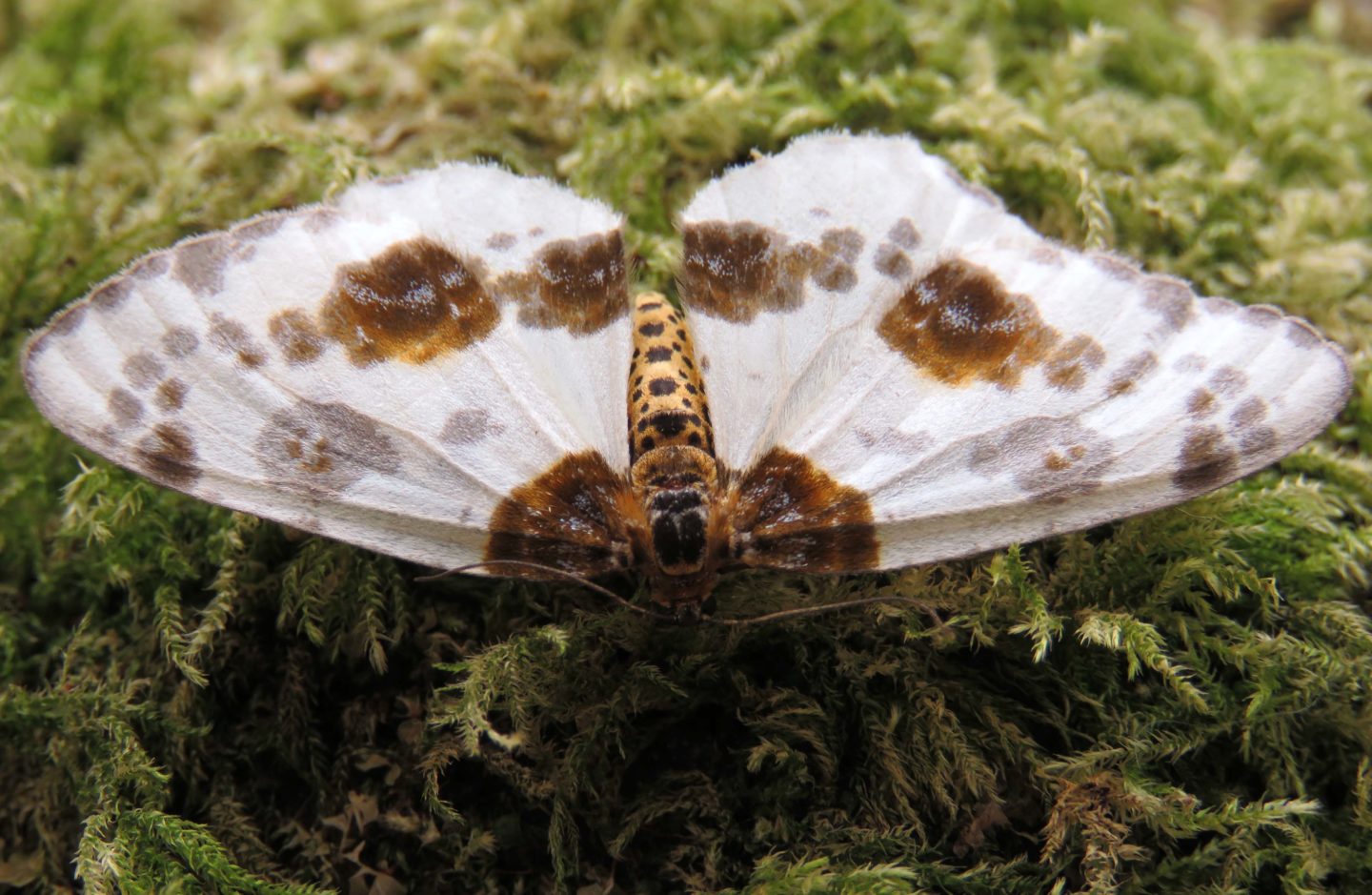
Clouded Magpie (Abraxas sylvata)
Exciting Times
There was huge excitement in our household at the end of the first week of July when a new moth box was delivered! So, that night it was set up in the garden at Bubble HQ to test it out. With 229 moths of 74 species, it seemed successful. The plan is to run two moth boxes eventually however, for the whole of July, I could only cope with one!
The moth box looked enticing.
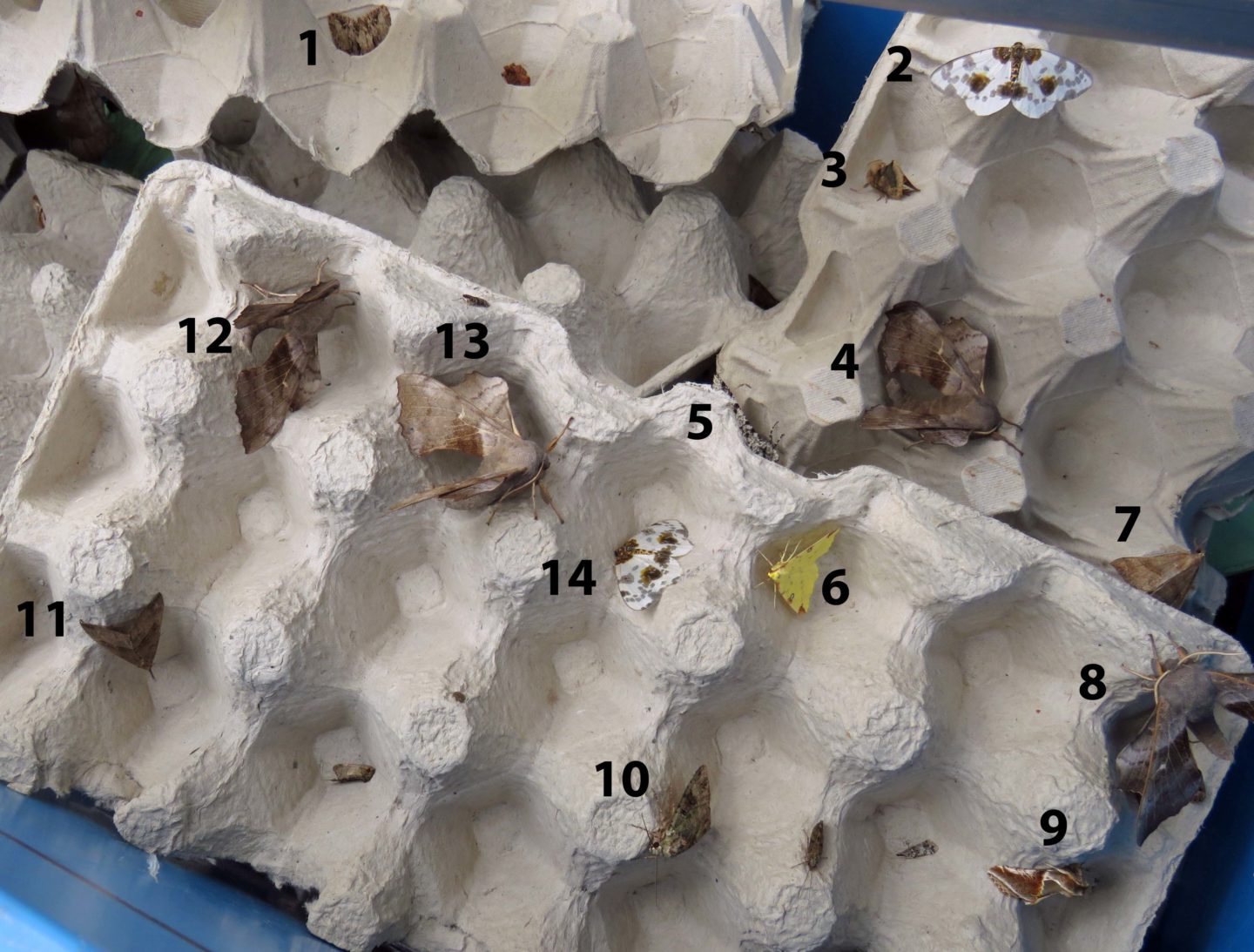
- Dark Arches (Apamea monoglypha)
- Clouded Magpie (Abraxas sylvata) – did I say these were uncommon? Perhaps I was wrong!
- Burnished Brass (Diachrysia chrystitis)
- Poplar Hawkmoth (Laothoe populi)
- Peppered Moth (Biston betularia)
- Brimstone Moth (Opisthograptis luteolata)
- Snout (Hypena proboscidalis)
- Poplar Hawkmoth (Laothoe populi)
- Buff Arches (Habrosyne pyritoides)
- July Highflyer (Hydriomena furcata)
- Snout (Hypena proboscidalis)
- Poplar Hawkmoth (Laothoe populi)
- Poplar Hawkmoth (Laothoe populi)
- Clouded Magpie (Abraxas sylvata) – see number 2
I have a fondness for the Burnished Brass. It was one of the first moths that I saw that I remember thinking ‘wow!’

Burnished Brass (Diachrysia chrystitis)
It’s so shiny in the light that the ‘brass’ on its wings take on just about any colour it’s paired with. Last year I took the photo below. I was amazed at how it merged itself into the decaying geranium leaf. The scientific name mentions gold twice. Diachrysia means ‘interwoven with gold’. Chrystitis means ‘like gold’. I find it strange that the common name is nothing to do with gold. Brass is not a precious metal and, to add insult to injury, the brass is burnished as if to replicate gold. Why not call it something more golden? I think the common name does the poor moth an injustice! On this occasion though, I was really pleased to see 5 of them in the box and 8 on the next Bubble HQ trapping night.

Two Peppered Moths came to the light. Like the Grey Arches, they evolved to have a darker background with lighter peppering to camouflage themselves on trees and buildings, blackened by air pollution. Here, in rural North Yorkshire, the Peppered Moth is usually light in colour with dark peppering. I did, however, have a darkened form last year.

Above and below the light form of Peppered Moth (Biston betularia)
A nice find was a Beautiful Snout. Found mainly in the south, it is not so common here around Bubble HQ. The larval foodplant is bilberry. Whilst there is bilberry up the hills and around Bubble HQ, I’m not so sure exactly where the nearest patch of it would be. I’d hazard a guess at Swift Alley some half a mile away.
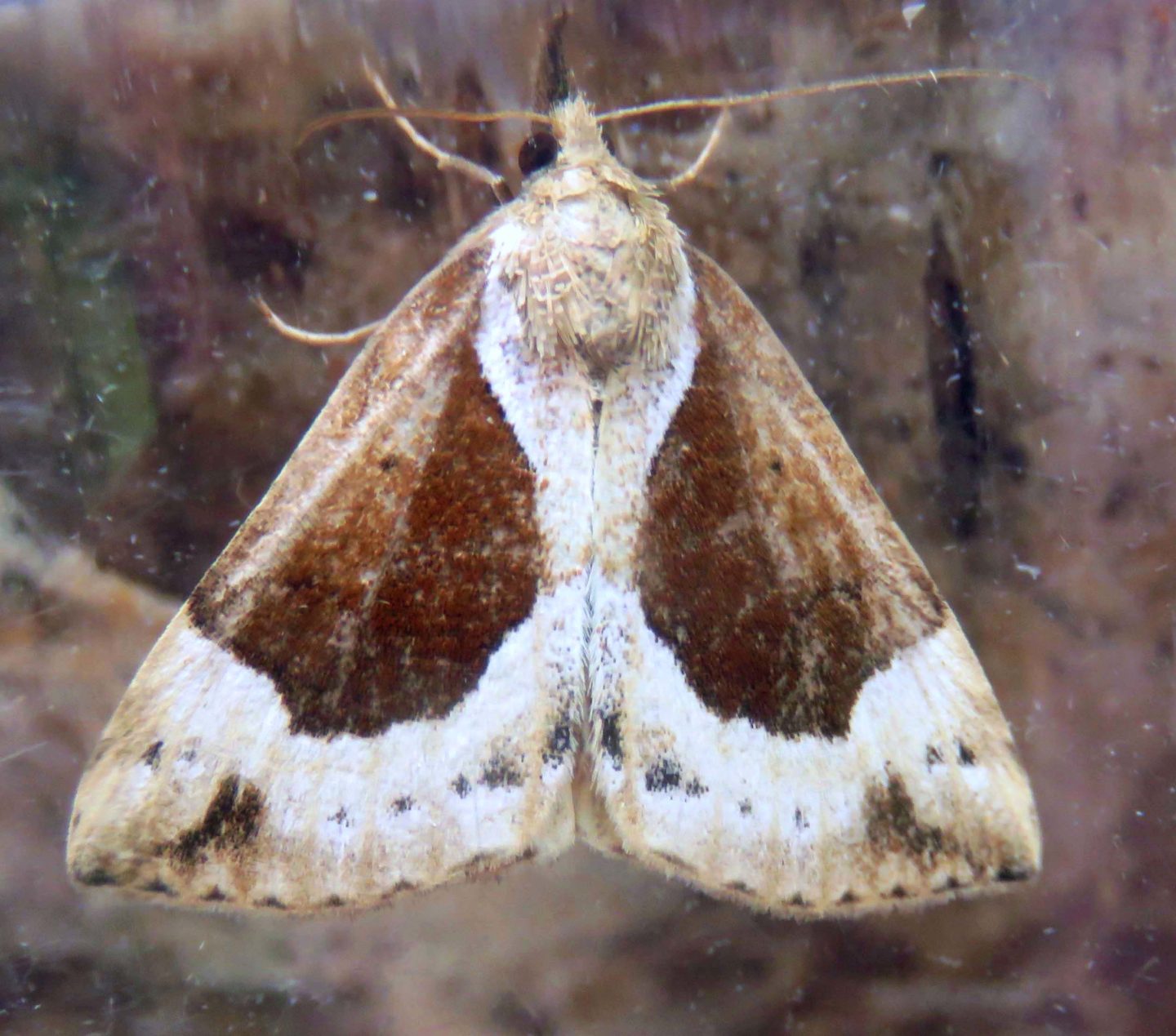
Beautiful Snout (Hypena crassalis)
The Large and Light Emeralds came down in pairs so two of each. The Large Emerald’s scientific name is Geometra papilionara. The latter part relates to being like a butterfly in the way that it positions the wings. The former part made me smile. Geometra means ‘to measure land’ and describes the long lolloping, looping strides of the caterpillar as if, indeed, it is out in the field measuring it.
The latter part of the Light Emerald’s scientific name, Campaea margaritata, means ‘pearl’. It does certainly have that pearlescent look to it.

Light Emerald (Campaea margaritata) above & Large Emerald ( Geometra papilionara) below
The next trapping session was also a Bubble HQ and produced 159 moths of 50 species. Amongst all the usual moths, a Muslin Footman came down. Beautifully delicate, almost translucent, I can see why the common name refers to muslin. The scientific name Nudaria mundane also refers to the delicate look. Nudaria means ‘naked’ referring to the thin wing scales and mundane means ‘elegant’. It reminds me of Mother of Pearl, not the moth but actual Mother of Pearl. Not a common moth here.

In contrast to the delicacy of the Muslin Footman, a Common Footman came to the light, looking chunkier, stockier and a much more solid-looking moth. It likes to play dead when disturbed so, at first, I thought it was indeed, dead. Both of these footman moths like rocky places and the foodplants included lichens on trees, rocks and stone walls.
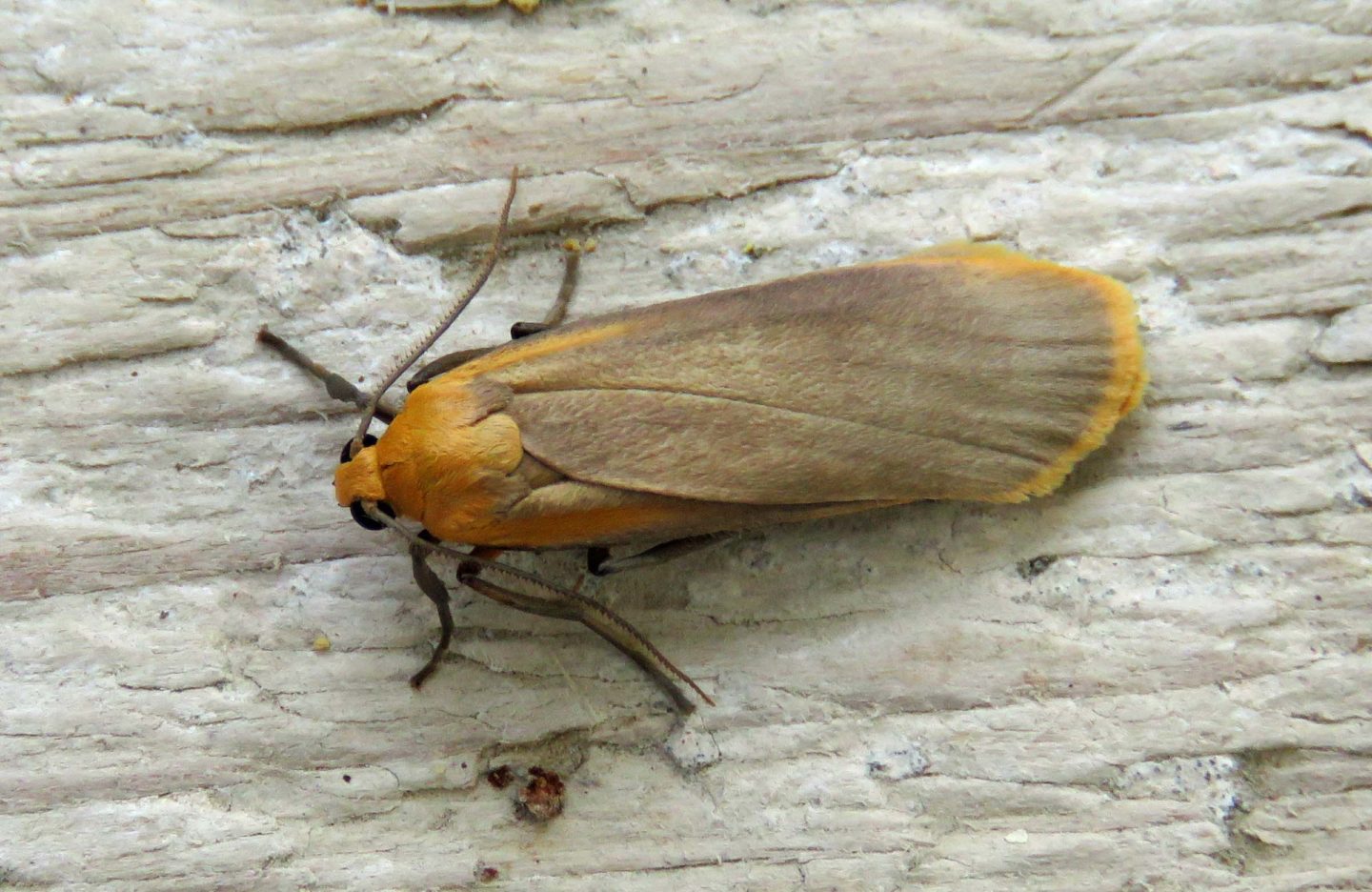
Common Footman (Eilema lurideola)
The first Blood-vein of the year was in this box. It likes damp places with rank vegetation. Lovely. That, along with the name of ‘Blood-vein’, doesn’t really endear me to this moth which is a shame as it is beautiful with a thick redddish line running across the wings and a red tinge to the wing fringes. This one looked a bit tatty.
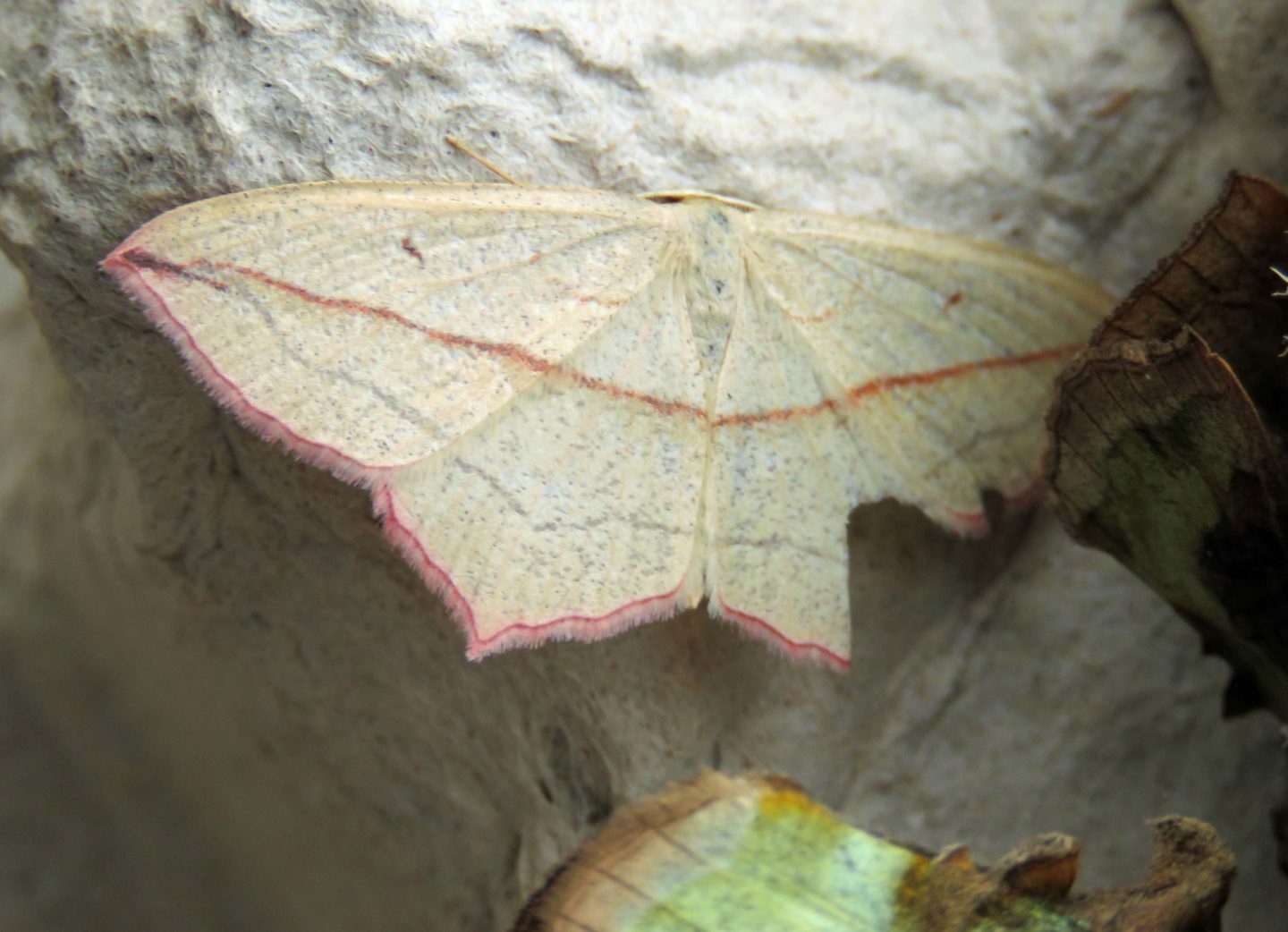
Blood- vein (Timandra comae)
And tonight’s box produced…….nothing!
Having checked out suitable spots during the day, I thought I’d found an interesting spot. In daylight, Dark Green Fritillaries had flitted amongst the grasses and flowers, I found a Gold Swift and a Silver Ground Carpet asleep under bracken leaves and, more excitingly, I caught a Blackneck Moth, uncommon in these parts, flying amongst the undergrowth. So, I had no doubt that this would be a great area to set the moth box up in. How wrong was I?
I think that alarm bells were ringing when, as darkness fell, there were no midges about at all. It was very windy and, for July, really cold. Only the odd moth came to the light so I gave it up as a bad job and came home.
Not all was lost though….the sunset over Newclose Rigg was fantastic and I was accompanied all the while by Nightjars churring the night away. One even crossed in front of me on the way home. It was too dark for photos though.

Making Waves
Another new site, this time at Pexton Pond in Dalby Forest, saw me running around madly waving my net (I was getting strange looks from the ducks and geese) trying to catch loads of moths flying low over the surrounding undergrowth. They all, apart from one Small Magpie, turned out to be Small Fan-footed Waves. I caught 34 but there were many, many more.
Second on the list with 18 in total, and certainly not to be missed in this July report, was the July Highflyer.

July Highflyer (Hydriomena furcata)
Moths and Mammals
A trip to Little Dale and a new site at a disused quarry both in Dalby Forest both turned out to be fruitful. An intricately patterned moth that I had never seen before appeared in Little Dale. The micro moth Evergestis pallidata is uncommon in northern England so it was exciting to see it.
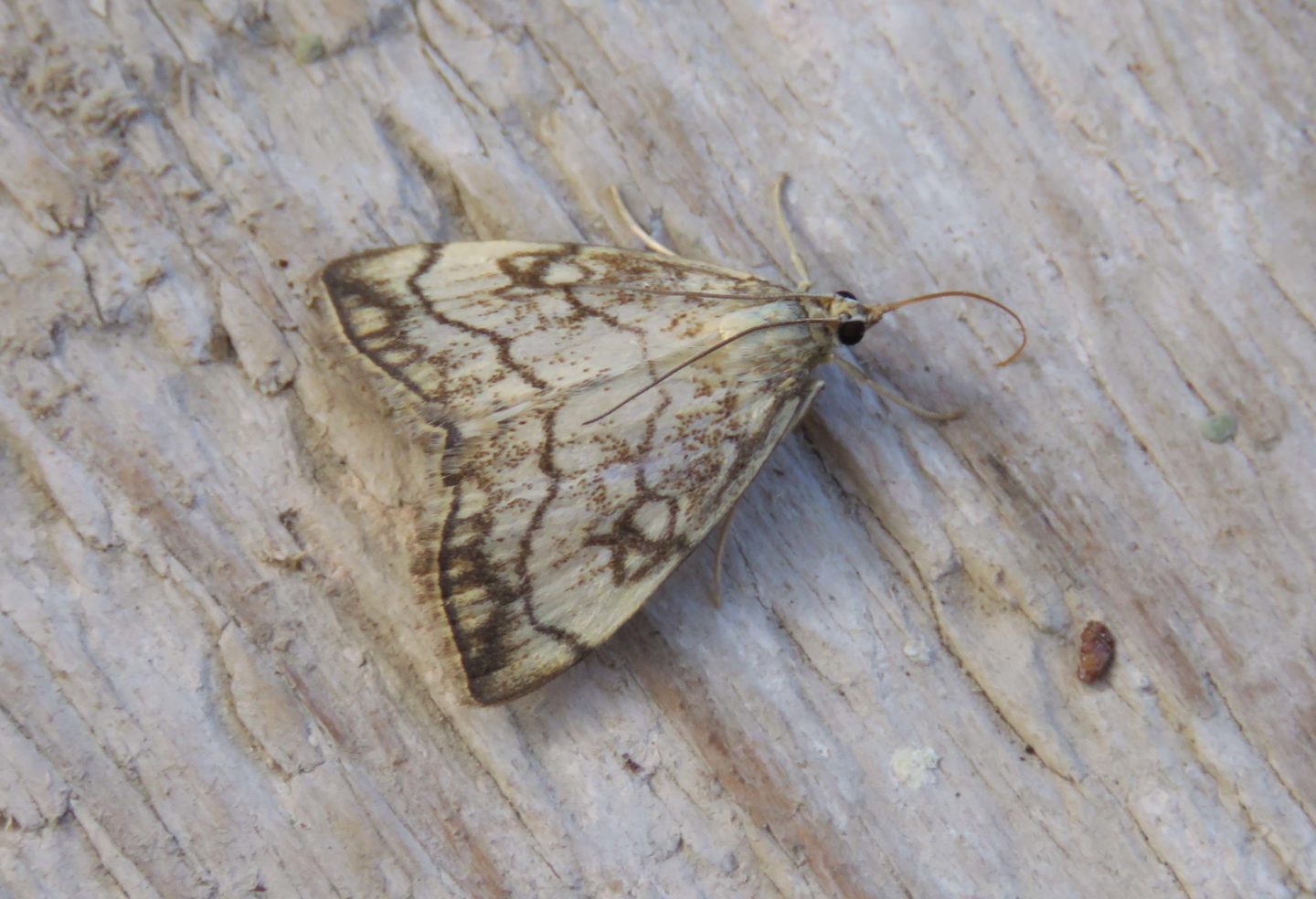
Evergestis pallidata
Also at Little Dale and also uncommon in the north was the Yellow-tail.
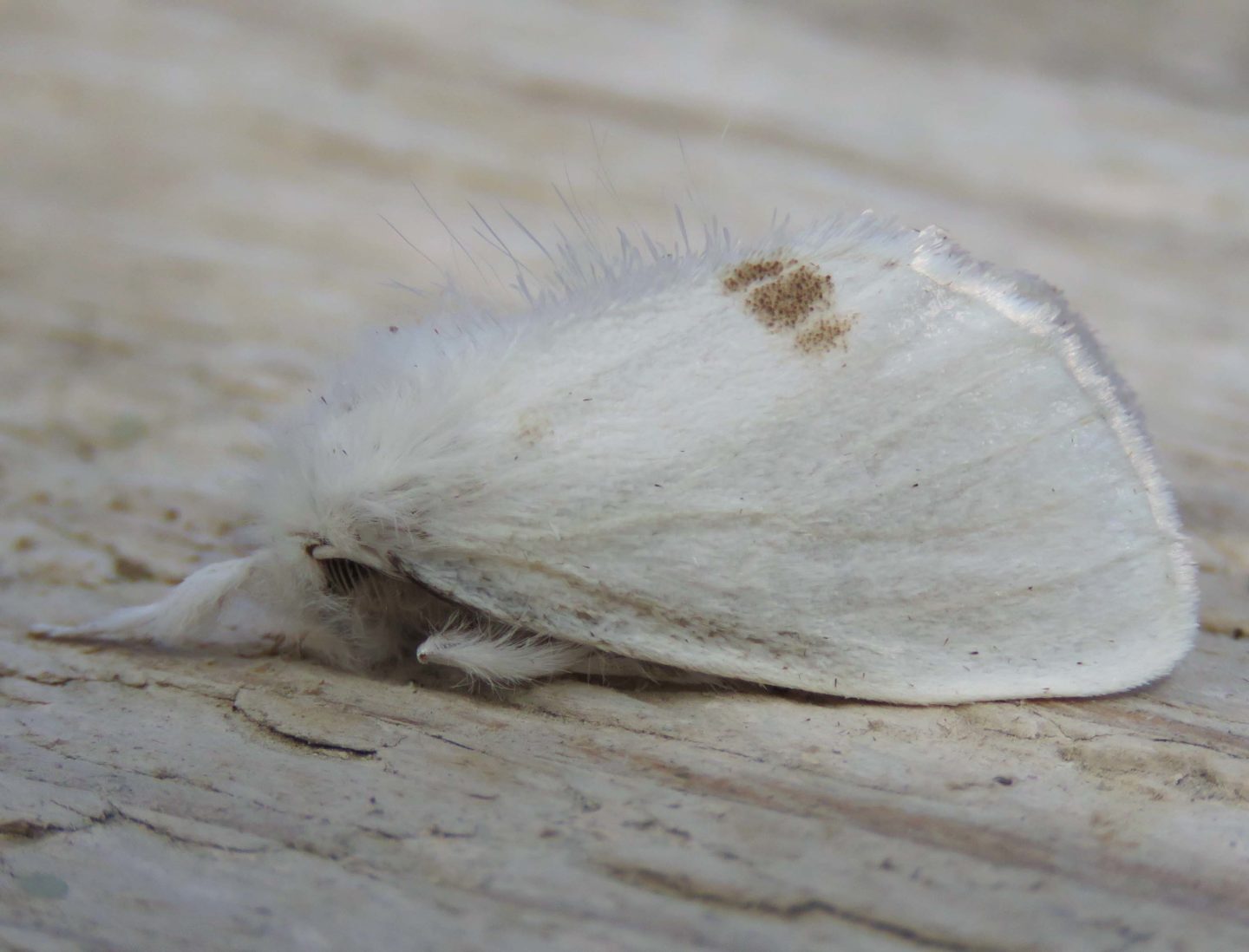
Yellow-tail (Euproctis similis)
Meanwhile, at the new site, the moth box light caught Six-spot Burnet cocoons on the grasses.

Several Pyrausta purpuralis were seen here. Amongst the larval foodplants is Wild Thyme which filled the quarry with scent so it wasn’t surprising to find this moth.
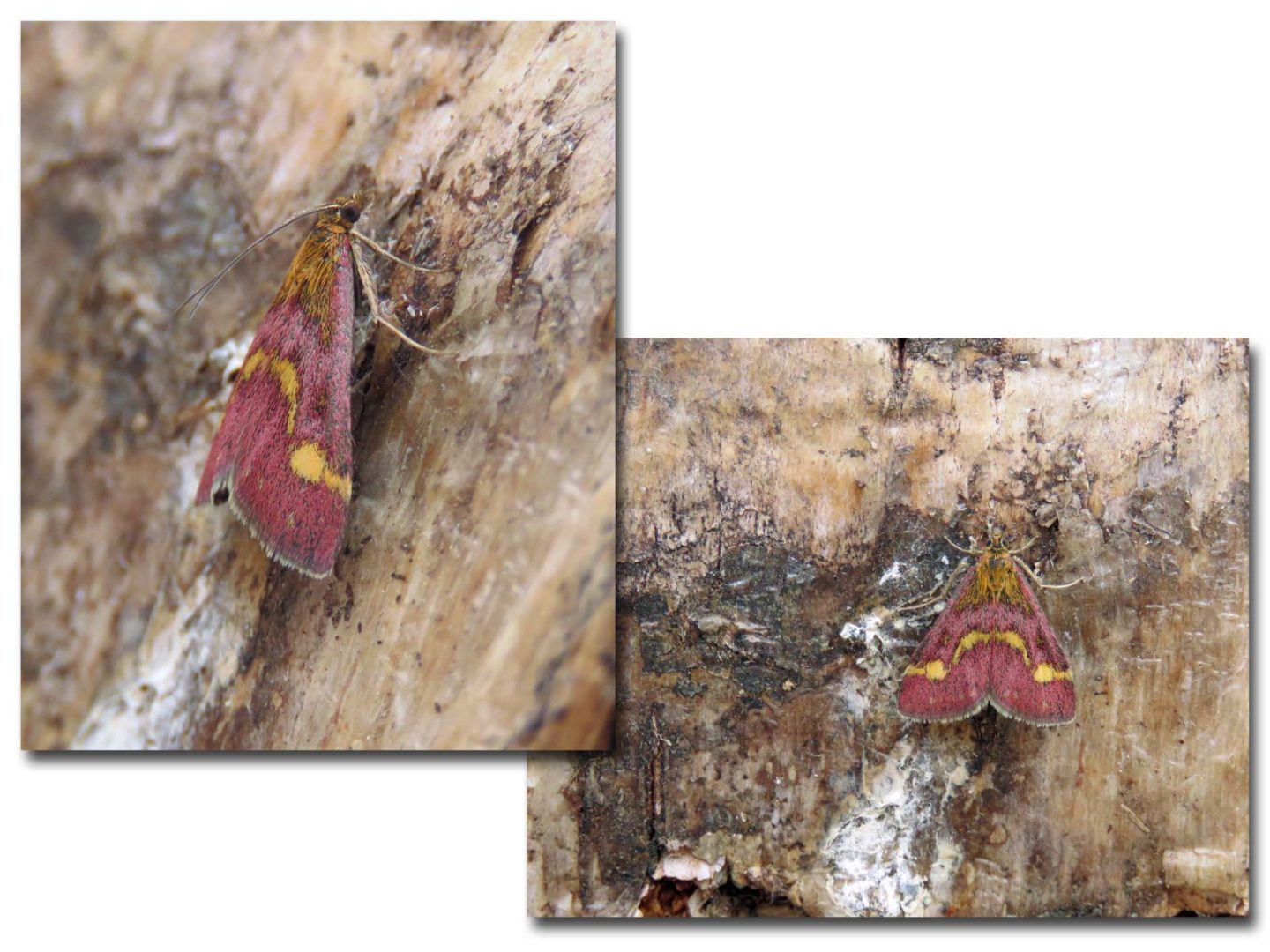 Pyrausta purpuralis
Pyrausta purpuralis
Throughout the time in the quarry, bats flew overhead. After a couple of hours, we packed up and were just about to leave when a hare ran out across the track with three leverets. The hare disappeared but the leverets followed my husband around everywhere. He couldn’t lose them. Eventually, they realised that he wasn’t mum and hunkered down in the undergrowth. Impossible to take photos of them in the dark but I tried. It was just a fantastic end to a good mothing night and ended July on a high. I was going to say ‘highflyer’ but that just might have been a bit too corny!

What’s in the box? June stats (totally unscientific!)
Number of sessions – 8
Temperatures – ranging from 10 to 22 degrees
Total number of moths – 1078
Most common – Small Fan-footed Wave
Most annoying – All the Waves (joint winners)
Best underwear – Green Arches
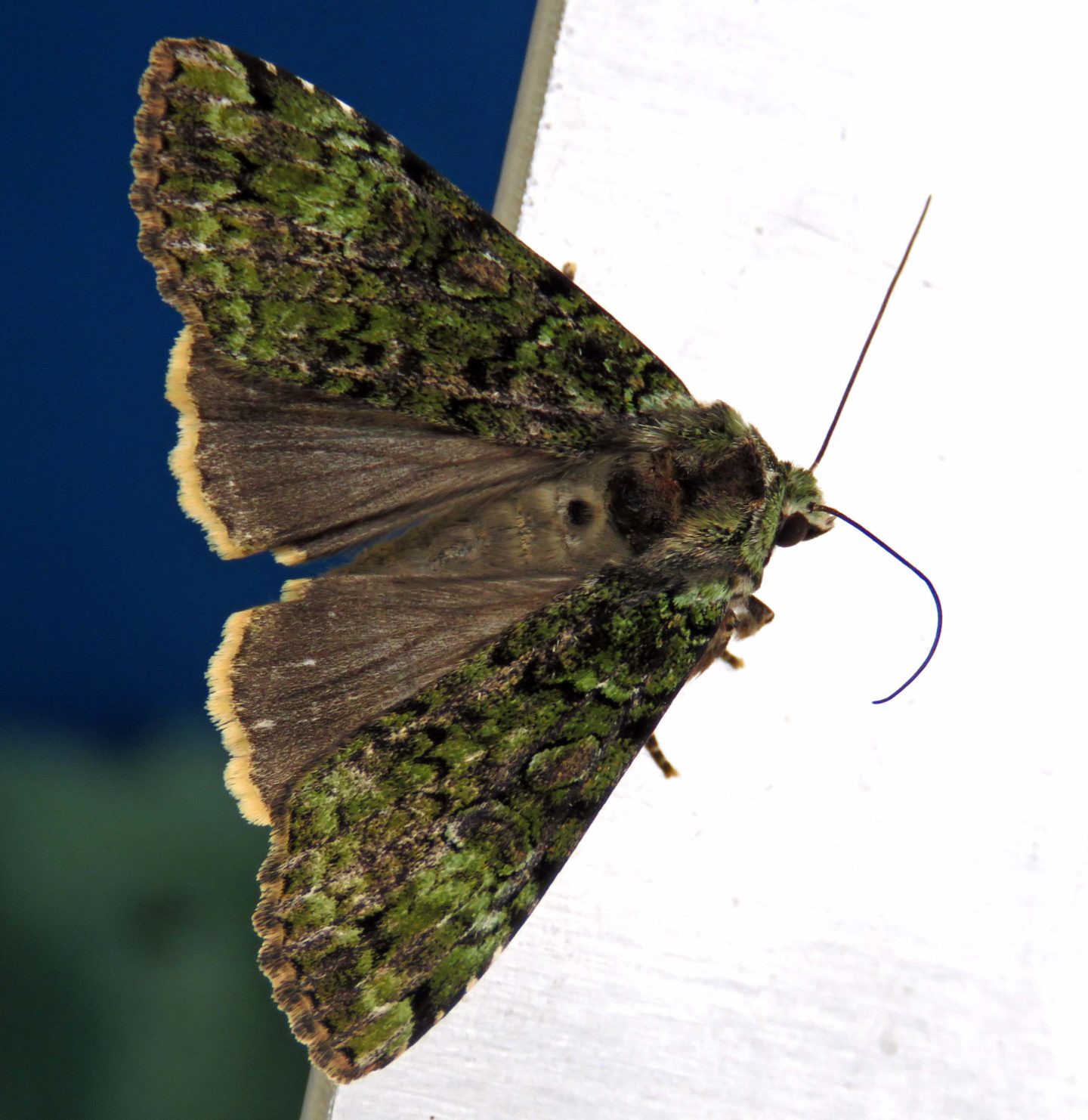
Most likely to appear in a Disney movie – Large Emerald

Most likely to appear in a horror movie – Blood-vein
Most Clingy – Drinker
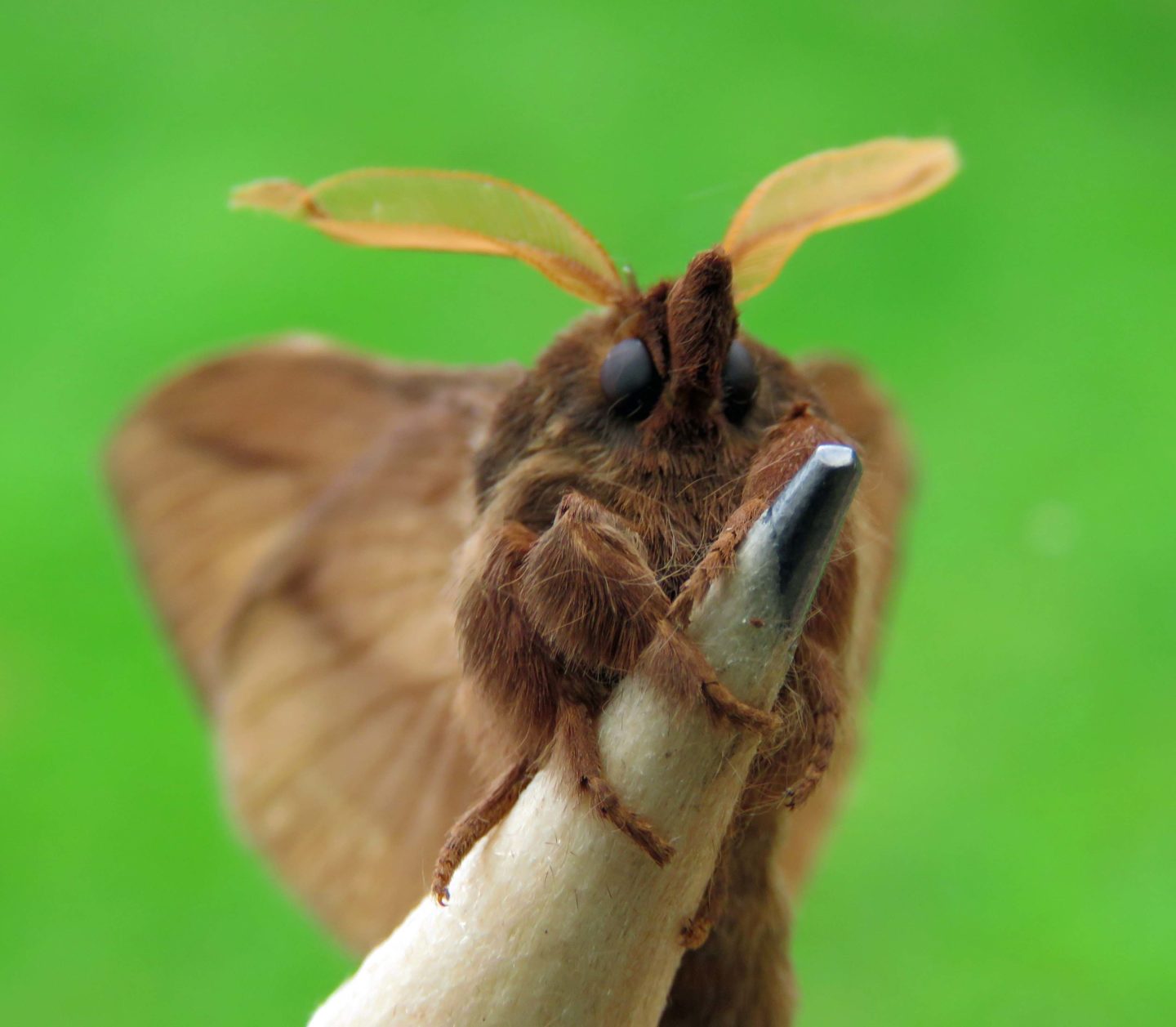
Moth of the month – Green Arches for camouflaging so well
